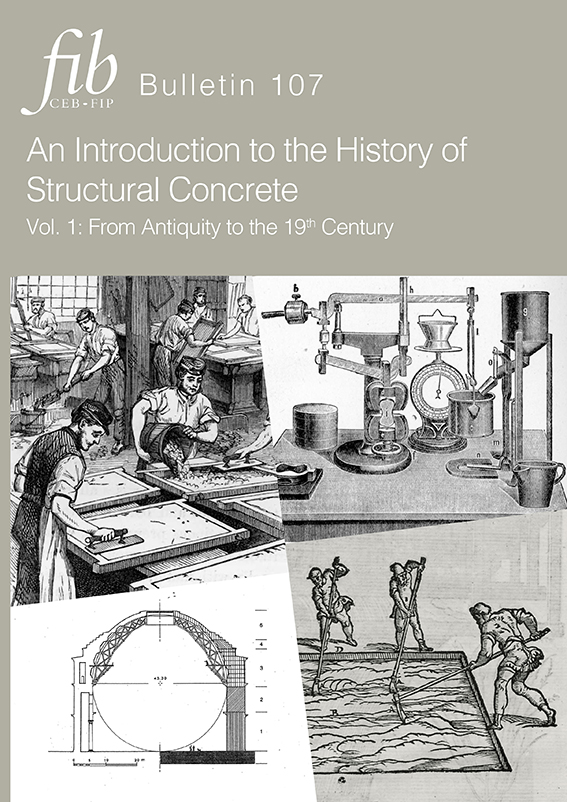An Introduction to The History of Structural Concrete (Hardcover)
Vol. 1: From the Ancient to the 19th Century - Manual (134 pages, ISBN 978-2-88394-170-0, August 2023). Hardcover.
fib BULLETIN NO. 107
Title: An Introduction to The History of Structural Concrete -
Vol. 1: From the Ancient to the 19th Century
Manual
Year: 2023
Pages: 134
Format approx. DIN A4 (210x297 mm)
ISBN: 978-2-88394-170-0
Abstract:
This bulletin is a Manual, the first Volume of a series on the History of Structural Concrete prepared by Task Group 1.6. This first Volume follows the structural concrete evolution from Antiquity to the 19th Century.
The history of concrete is more than stories about the past. It shows where we are today and where we can go. Cement is a binder of the whole story.
The history of concrete—and above all, that of building and construction research in the broadest sense—has been a subject of interest for a long time. As engineers, architects or builders, there is no need to reinvent the wheel. Instead, the work of predecessors can be continued. Analysis of past abnormalities and understanding of historical developments are worth using as the basis for future solutions. Above all, being involved with concrete in today’s world means dealing with building materials, aesthetic principles, construction methods, and computational techniques of the past and present to identify starting points that can be used in the future to save materials and energy but also working time.
In most groundbreaking research projects, in the beginning, researchers found themselves looking into the past. Who was the first person to research a particular topic? What is the stage of development today? What questions remain unanswered? This approach is nothing extraordinary but rather self-evident and has been the guiding force behind the evolution of structures, materials, and construction methods. An inevitable sense of admiration arises when we look at structures and into the story of their builders, who showed great courage by bringing their ideas to life, one structure at a time.
The argument of this document represents a novelty for the fib, and it is essential for disseminating the knowledge to the community. It is particularly crucial to disseminate the information presented in this manual to students and young engineers.
The historical analysis of the past is essential for the conceptual design of new structures. In addition, historical knowledge is vital when engineers approach existing structures: a critical historical analysis is essential for the correct structural assessment.
We can also consider this manual—and the upcoming volumes on the History of Structural Concrete—essential and useful documents at different levels. Regardless of whether you are a student, an engineer, or simply have an interest in cement’s history, this bulletin is certain to provide you with valuable insights.
Download the copyright page (= list of authors) as a PDF file.
Download the table of contents as a PDF file.



